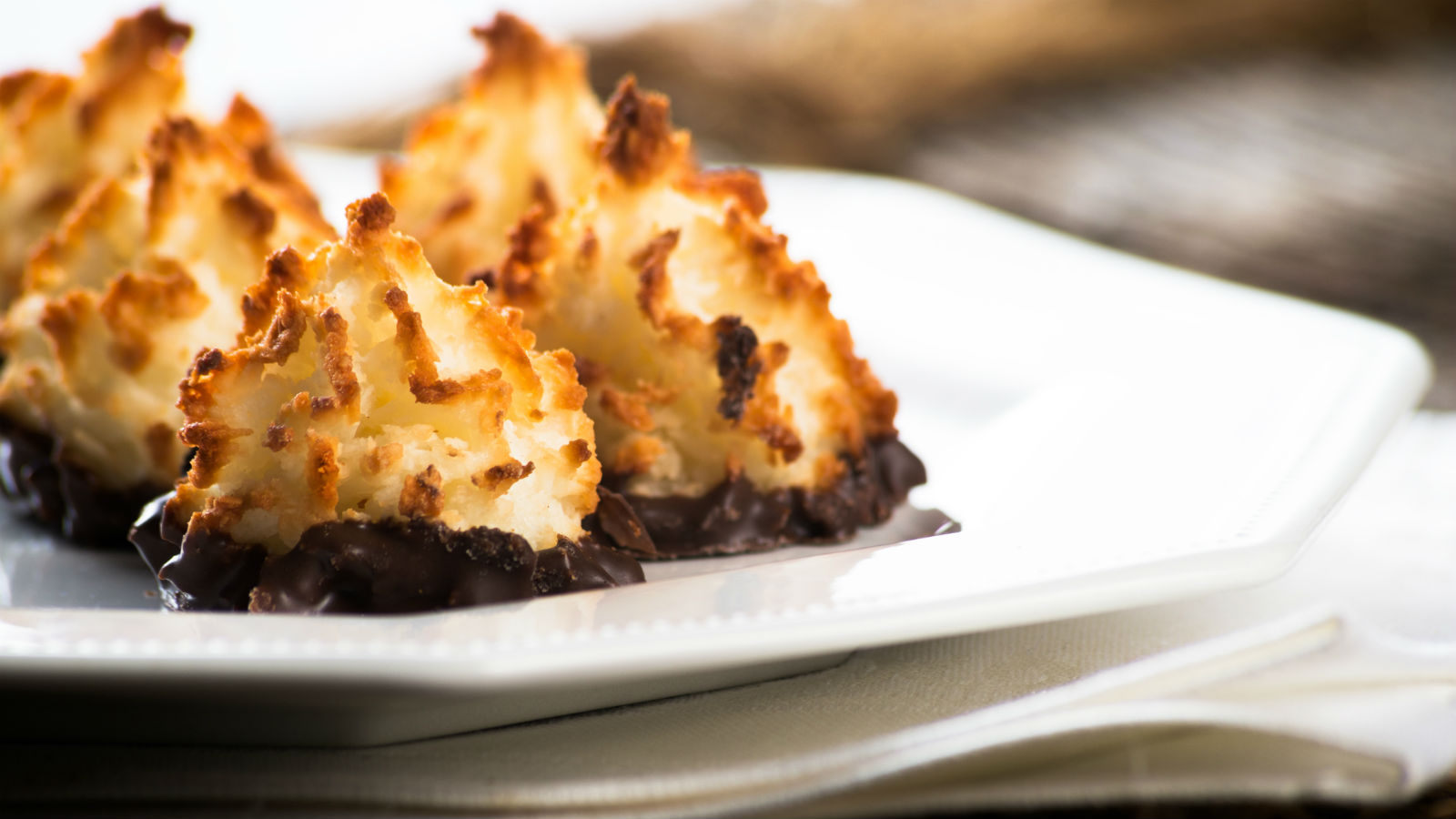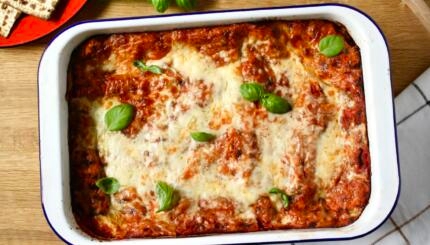Macaroons
Beyond Manischewitz's wildest dreams.
For most of my life, I loathed macaroons–and from the evidence I gathered, so did the rest of my family. Every year around Passover, an aluminum cylinder of Manischewitz coconut macaroons would show up amongst the overflowing bags of Passover foods my mother brought home from Chicago’s kosher supermarket. And every year as our family transitioned back into our normal cereal and English muffin routine, the cylinder would remain, virtually untouched.Reading Elizabeth Hafkin Pleck’s book, Celebrating the Family: Ethnicity, Consumer Culture and Family Rituals, I finally understood why the macaroons returned year after year. According to Pleck, macaroons along with kosher-for-Passover chocolates, matzah ball mixes, and other packaged foods, were part of a mid-20th century campaign by kosher companies to capitalize on the Jewish holiday market.
These products made it easier for families to observe Passover’s restrictions, and somehow captivated the hearts of American Jews. By the 1950s, Pleck writes, “Barton’s chocolate tin and Streit’s aluminum container for macaroons [had become] cultural objects in themselves.” No wonder the macaroons kept showing up in my home. Despite my family’s shared loathing of the tinny, cloyingly sweet cookies, they were so iconic that the holiday simply did not feel complete without them.
Traditional macaroons originated in 16th-century Venice (possibly in a monastery), and are typically made with ground almonds. They also rarely contain dairy; their pareve status helps to explain why Jewish communities began to incorporate macaroons as a favorite dessert. The coconut version, which is most popular in America, first gained esteem in the 19th century, and was further popularized by companies like Streit’s and Manischewitz. The older dense and chewy macaroon with ground nuts, and the newer macaroon textured with shredded coconut, are held together in the same cookie family by the inclusion of sugar and egg whites in the mix.
It was not until five years ago, during my first months living in New York, that I finally discovered a truly delicious macaroon. I was attending a “Havdalah and chocolate” potluck party and, not realizing it, put a homemade macaroon on my plate. Delicately browned, textured with shredded coconut, and studded with gooey chocolate chips, it hardly resembled the store-bought version I knew and hated. One bite was all it took to convert me.
That macaroon taught me two important lessons. First the obvious: homemade treats are almost always better than their manufactured cousins. And second, macaroons can and should be enjoyed out of their Passover context. Sephardic Jews, for example, have included macaroons in their Purim celebrations for centuries. And according to Gil Marks’ The World of Jewish Cooking, Iraqi Jews served cardamom macaroons for both Purim and the Yom Kippur break fast. So whether it’s a potluck Havdalah, Shabbat lunch, or mah-jongg night, skip the Manischewitz and give macaroons a chance to really shine.
Ingredients
3 1/2 cups shredded unsweetened coconut
1/8 teaspoon salt
scant 1/4 teaspoon orange extract
1 1/2 teaspoons vanilla
1 egg white
2/3 cup sweetened condensed milk
1/2 cup semisweet chocolate chips
Directions
Preheat the oven to 325 degrees and line a baking sheet with parchment paper. Stir together the condensed milk, egg white, vanilla, orange extract, and salt in a medium bowl until well combined. Fold in the coconut, followed by the chocolate chips. Drop tablespoonfuls onto the baking sheet, leaving about 2 inches between each cookie.
Bake until cookies are lightly brown, 20-25 minutes. Allow to cool, then peel cookies from parchment. Store in an airtight container.
kosher
Pronounced: KOH-sher, Origin: Hebrew, adhering to kashrut, the traditional Jewish dietary laws.
pareve
Pronounced: PAHRV or pah-REV, Origin: Hebrew, an adjective to describe a food or dish that is neither meat nor dairy. (Kosher laws prohibit serving meat and dairy together.)
Purim
Pronounced: PUR-im, the Feast of Lots, Origin: Hebrew, a joyous holiday that recounts the saving of the Jews from a threatened massacre during the Persian period.
Shabbat
Pronounced: shuh-BAHT or shah-BAHT, Origin: Hebrew, the Sabbath, from sundown Friday to sundown Saturday.
Yom Kippur
Pronounced: yohm KIPP-er, also yohm kee-PORE, Origin: Hebrew, The Day of Atonement, the holiest day on the Jewish calendar and, with Rosh Hashanah, one of the High Holidays.



